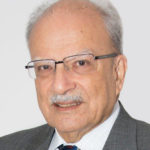

Go to Admin » Appearance » Widgets » and move Gabfire Widget: Social into that MastheadOverlay zone

Author: Shahid J Burki
Pakistan’s future also depends on the way the country is perceived by the world outside. The country’s narrative needs to change. It is viewed negatively by the world at large in part because of the way Pakistanis themselves view their present and their future. Some years ago I had lunch with an American journalist who writes frequently about Pakistan. “Do you view my reporting about Pakistan to be negative,” she asked. “I meet a lot of Pakistanis while traveling in the country. I get invited to many houses for a drink or a meal. The people are very hospitable. However, when they are talking about their country, their views are mostly negative. Their talk to me suggests as if they have given up hope about their country’s future. I am [a] reporter; I write what I hear,” she explained.
She was right. I have run into the same kind of talk when I visit Pakistan. Even the large Pakistani diaspora in the United States of which I am a member has negative views of the country of their origin. The Western press has indeed contributed to the development of this narrative. I will quote from another conversation, this time with a very close American friend, to indicate the kind of general impression people here have about Pakistan. Whenever I am about to leave for home, this particular friend would tell me to avoid dangerous places and stay safe. One day I asked him why did he always say this to me. I said that the probability of my being killed in a terrorist attack in Pakistan was much smaller than my dying in a road accident on the New Jersey Turnpike. This is the main motorway that connects New York with states down south.
His response was interesting. “If you die in a terrorist attack in Pakistan, that story along with your picture will be on the front pages of the newspapers such as The New York Times and The Washington Post. If you die in a highway accident, your wife will have to buy ‘in memoriam’ space in these newspapers.” What he was implying was that any news connected with radical Islam is front-page material in the United States, probably also in England and the European press.
There are two other subjects that draw negative attention to Pakistan in the Western press. One is the way women are treated in the Islamic world and how Muslim countries are dealing with religious minorities. Stories related to these two make news even when they are positive. On one particular day, the day after Christmas, The New York Times and The Washington Post carried positive stories about women and minorities in Pakistan. The former gave a fair amount of space to an analysis of the decline of Pakistan’s film industry since the days of the military dictator, President Ziaul Haq. In her story, “A Pakistani film, banned and then revived, strikes a timely nerve,” Mehreen Zahra-Malik who covers Pakistan for her newspaper, mentioned a “film about a rape victim who fights to bring her politically powerful attacker to justice has rankled Pakistani censors but emboldened women to speak about sexual assault in a country where the discussion of such topics is discouraged.”
The film Verna was banned by Pakistan’s central board for its “edgy content” that “maligned state institutions”. However, public outcry fueled by extensive news coverage and a social media campaign led to the lifting of the ban by the appellate board. Zhara-Malik reminded her readers that before General Zia followed the practices in Saudi Arabia that did not allow the public showing of movies, Pakistan had a large movie industry. The industry was discouraged by the exceptionally devout Muslim leader. He was happy to impose his views about religion on the citizenry. He killed the once vibrant film industry in the country. In 1981, Pakistan was one of the top 10 film producing countries in the world, producing more than 100 movies a year. It had more than a thousand movie theatres. Now the country makes about 20 films a year and only 45 screens show movies. But the situation is changing. Even Saudi Arabia has allowed the opening of movie theatres.
The other, day after the Christmas story, was by Pamela Constable of The Washington Post. She reminded the readers of the acts of terrorism committed by radical Islamists against the country’s Christian community of three million in a population of 207 million. A week before Christmas, nine people died and 57 were injured when a church in Quetta was attacked by two suicide bombers. On Easter Sunday in 2016, Taliban suicide bombers killed 72 people and wounded more than 300 at a park in Lahore. In September 2013, a suicide attack at a church in Peshawar left 80 people dead. In March 2011, Shahbaz Bhatti, a Christian and federal minister for religious minority affairs, was assassinated. But at Christmas time in 2017 there was a reaction as people came out against these acts of terrorism. In a story titled “Christmas spirit shines in Pakistan despite church attack,” Constable described a country not familiar to the West. “Across Pakistan, church volunteers got busy decorating trees and placing wreaths on pews, some posing for TV news cameras. Urban bazaars that had been lit up [on] December 1st to celebrate the birthday of the prophet Muhammad [pbuh] glowed with Christmas lights, illuminating displays of plastic fir trees and tinsel imported from China.”
Acts such as these can improve the narrative about Pakistan and that will contribute to ensuring a better economic future. Potential investors will be drawn to the country and bring in badly needed capital.
(Published in Monthly Tribute International on 01-01-2018)
You must be logged in to post a comment Login